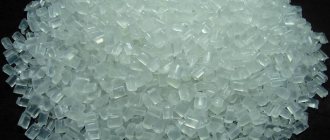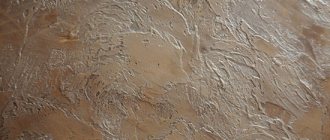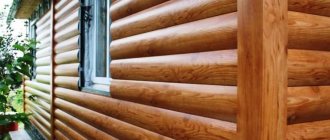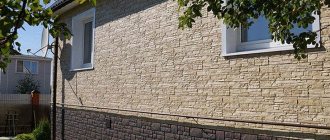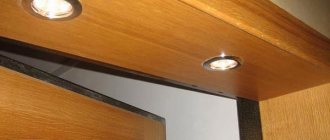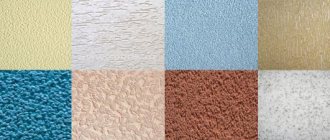The quality and durability of wood directly depend on the finishing materials used to treat the surface. Of course, each type and type of wood is suitable for a certain material. It is also necessary to take into account the type and nature of the surface, its purpose and the expected end result.
It has long been believed that the best means for impregnating wood should be extremely harmless to humans and the environment and contain natural ingredients of natural origin. That is why linseed oil for wood is invariably considered the best product for interior decoration.
Is it possible to use regular flaxseed oil?
Pure flaxseed oil can be easily found at a pharmacy or convenience store.
On the modern market you can find many natural impregnations based on linseed oil. As a rule, these are teak, tar and tonic oils. However, in everyday life it is quite acceptable to use flax seed oil in its pure form.
The protective properties of natural polymer were known to people back in the days of Ancient Egypt. For many centuries, household dishes and utensils, icon boards, ship equipment, and building materials were treated with pure linseed oil.
Flaxseed oil for wood processing is obtained using cold or hot pressing, as well as extraction.
The purest oil, without a distinct odor, is obtained by extraction - using solvents and further refining. Pressing produces more impurities and a noticeable odor in the final product.
The purest composition of linseed oil for wood is the unrefined product. There are no mechanical impurities in it, however, during long-term storage, such natural oil deteriorates and produces sediment. However, woodworking experts recommend using it, since this oil polymerizes quite quickly.
How to soak?
With small product sizes, it is possible to fully, deeply impregnate the wood with linseed oil, the technology of which has two sub-variants: under pressure and without. They differ in equipment and timing.
In both cases, the product is completely immersed in oil. After the release of bubbles on the surface stops, a vacuum pump is connected to the vessel.
And the wood is then saturated quite quickly - in an hour or two. The process is considered complete when the part being processed begins to sink. This method has a significant flaw: it requires a vacuum installation.
Every peasant household used to know how to saturate wood with linseed oil without any special tricks or devices - this is how they treated dishes and simple household equipment. The wood was simply left in the composition for several days (from a week to a month). And again the readiness indicator is the same: drowned - ready.
You can speed up the process in a simple way - immerse the part in heated oil. Boil for about an hour. But you should be very careful - the protective composition is very flammable.
Advantages of pure flaxseed oil
Flaxseed oil perfectly protects wood from rot and insects
Wood after treatment with linseed oil is not susceptible to moisture and parasites. The main advantages of pure impregnation include:
- Full polymerization - oil is perfectly absorbed into the structural mesh of wood and fills its smallest pores, preventing the formation of cracks in the upper layers.
- Does not create an airtight film - wood does not lose its ability to “breathe” after treatment.
- Linseed oil creates a thin layer on the wood through which moisture does not penetrate.
- Harmful bacteria do not multiply in the structure of treated wood.
- Flaxseed oil has high adhesive properties - it bonds firmly to wood and is not washed out even for a long time.
- After hardening, linseed oil ceases to be a fire hazard.
- Natural impregnation is safe for health and the environment.
- Linseed oil enhances the texture of wood, giving it a matte, oily shine that is pleasing to the eye.
- You can process old wooden products - linseed oil perfectly masks small defects and prevents the formation of new ones.
- The most budget-friendly and common option for woodworking is unbleached oil, which can be found for 200-300 rubles per liter in any hardware or pharmacy store.
However, it is worth understanding that pure flaxseed oil also has its disadvantages.
How long does it take to dry?
There is no clear answer to the question of how long it takes for linseed oil to dry on wood.
Depends on temperature, wood porosity, degree of oil purification and other factors. On average, unprepared oil takes a week to dry. Although the process can be greatly accelerated.
To reduce the polymerization period, linseed oil for wood processing is pre-boiled two or three times (an archaic method of obtaining drying oil). Better in a water bath. At the same time, you need to understand that boiling oil is not much like boiling water - the bubbles will be small, and as if suspended in the thickness.
It is permissible to add a drier. The best natural and harmless option is pine rosin. It is either diluted in alcohol and added to boiling oil, or melted in a container into which the oil is then poured and the whole thing is boiled together.
There is also a complex method: boiled oil, rosin, wax and gum turpentine are mixed in approximately the ratio 1(2): 0.1(0.03):1:1. This composition dries quickly and penetrates well into the pores.
Disadvantages of flaxseed oil
Due to its high fluidity, linseed oil is deeply absorbed. But here lies the disadvantage of this remedy. To create a reliable protective layer on the surface of the product, oil must be applied at least four times. And this, in turn, significantly delays the wood processing process.
The time it takes to completely dry linseed oil does not play into the hands of those who want to process it as quickly as possible. The fact is that natural impregnation polymerizes in about 72 hours. It takes about a week for the oil to dry completely.
To shorten the long drying and polymerization time, special components are added to the oil. How to dilute linseed oil to impregnate wood:
- turpentine;
- tar;
- wax;
- tung oil.
And here it is important to understand the features of some additives:
- Turpentine is a toxic substance. Therefore, it is advisable to use it outdoors. In addition, turpentine can burn the skin and cause allergies. When working with it, you must use protective clothing and a respirator.
- Tar is slightly less toxic, but it is also undesirable to use it indoors.
So the safest additives are wax and tung oil. You can read more about the proportions in which to mix natural ingredients in our article “Do-it-yourself wood oil.”
To give the impregnation a particular color, you need to add a natural pigment to it. Seasonings such as turmeric or paprika are often used as a dye for linseed oil on wood. You can also tint the oil using gouache or oil paints. However, adding color requires maintaining precise proportions so that the final color does not turn out too pale or, conversely, too saturated.
If you are in doubt about how to tint linseed oil for wood, the tinting procedure can be simplified a little. To do this, before applying oil, cover the wood with stain of the desired shade.
Flaxseed oil is not protected from UV rays. Because of this, it turns yellow over time. To avoid this effect, wax is added to linseed oil, which is first melted in a water bath. In addition, you can pre-clean the oil from the impurities it contains. To do this, it is mixed with ethanol, brine or lead salts.
Pure flaxseed oil does not belong to the category of “apply and forget” products. Therefore, wood impregnation must be renewed at least once a year.
Natural linseed oil is not particularly durable after application. It is vulnerable to mechanical stress and damage, which precludes its use for floor treatment.
Oil application technology
Stages of work
Work on processing a house made of timber or a log house will be similar. Conventionally, they can be divided into three main stages:
- Surface preparation. This stage includes surface cleaning and grinding. If you are painting a new house with a painted surface, first of all, remove the old paintwork.
- Priming and antiseptic. This step is required if pure oil is used. If processing is carried out by professional means, you must follow the manufacturer's recommendations. Some impregnations already contain an antiseptic and primer, which must be indicated in the instructions.
- Direct application of impregnation.
The process of applying oil to wood is described in detail in the article “How to treat a wooden house with oil with your own hands.” Therefore, in this review we will not dwell on the description of all stages, but will provide only the basic rules for oil painting.
Oil painting rules
Before starting work, it is necessary to determine the moisture content of the wood.
The optimal indicator in this case is 15%. Air humidity during painting is also essential. It should be within 80%.
Conifers with high resin content must first be impregnated with white spirit.
When painting wood with pure linseed oil, at least 4 layers are required to obtain a better result. When using professional products, you must follow the manufacturer's instructions. As a rule, to achieve the desired effect, impregnation manufacturers recommend applying 2 layers to unpainted wood and one to painted wood.
The oil should be applied along the grain of the wood using a stiff brush with artificial bristles or a lint-free cloth.
Be sure to sand between layers after each layer of oil has dried.
After the last layer has completely dried, the wood is polished with suede. Polishing allows you to give the surface an even, beautiful shine.
To check the quality of the resulting coating, you can apply a few drops of water. If the liquid remains in place, then the treatment was done well.
Other types of impregnations: what to choose?
To stabilize the condition of wood and improve its user characteristics, other oils and complex compositions with oil are used. Sometimes the choice of how to process a log house is influenced by the availability of ingredients. 1) Other oils They use drying oil, which is already partially polymerized oil - nut, linseed, due to heat treatment. Further polymerization occurs in air and faster than when using raw, non-thermally treated oil. Regular oil is absorbed slowly, it takes several weeks to completely polymerize, and it takes more than a month to apply several layers. Heat-treated drying oil is absorbed immediately, after a day it dries with the appearance of a film, 2-5 days after impregnation, the treated surface becomes inert and can be covered with a new layer. You need to purchase drying oil in special construction stores. It is dangerous to produce heat-treated oil at home by simmering it over a fire. Some manufacturers have switched to producing drying oil using safe chemical drying. In stores you can find drying oil oxol, which is attractive at a low price. It is made from sunflower oil, but it does not dry out, and over time it turns bitter and darkens. In order not to spoil the log house, it is better to choose other, more expensive than sunflower oils: - hemp, the effect of which is similar to that obtained when using flaxseed. To reduce the cost of impregnation (1 liter - 600 rubles), they are looking for a cheaper substance obtained from technical varieties of the plant; - tung, its purchase will cost slightly less (1 liter - 550 rubles). In terms of user characteristics, it is comparable to linen; – other natural oils with the property of polymerizing – obtained from poppy seeds, nuts, white acacia, pine and spruce seeds. 2) Oil compositions To preserve wood - introducing substances into its pores that create a protective layer, compositions based on oils with wax, tar, and turpentine are used. Thus, products are used whose main component is linseed oil (40-70%), and additives are wax, turpentine, rosin. Flaxseed oil (50%) is mixed with other oils - tung (15%), orange (10%), and wax, rosin. Beeswax and carnauba wax are used, which improves the user properties of cheap waxes. A composition is used that is prepared by diluting high-quality drying oil in a ratio of 7:3 with turpentine. Apply it warm, heating to 50-60°C. The log house can be given the desired shade by adding pigments to the mixture. 3) Waxing If tar and turpentine are toxic and can provoke allergic reactions, then mixtures with wax are safe for health and suitable for external and internal processing of log houses. Remaining on the surface and penetrating the wood structure, wax provides good moisture insulation. 4) Compositions with synthetic components Varnishes and paints with artificially obtained ingredients in the composition harden when dry. Impregnation of wood with such means is inferior in all qualitative characteristics to treatment with compositions with natural ingredients. Its only advantage is quick drying. Those who succumb to the temptation to quickly treat a log house with impregnation with non-natural components are faced with the downside of such a solution - constant restoration work.

